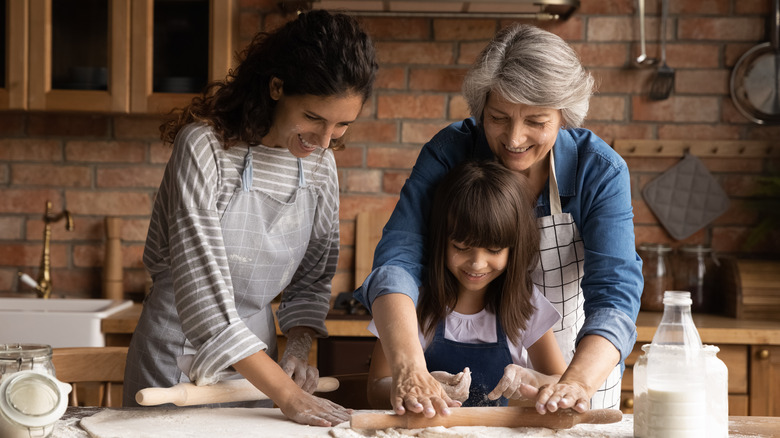Why Alton Brown Highly Praises The Classic Cookbook The Joy Of Cooking
As one of Food Network's most prolific television personalities, Alton Brown is one of the foremost authorities on food. Though he started his career as a cameraman, and later a commercial director, Brown received a formal culinary education from the New England Culinary Institute in 1997. He went on to write, host, and produce "Good Eats," which first aired on PBS and was later picked up by Food Network. "Good Eats" blends history, cooking, science, and comedy to showcase food cultures and culinary industries, as well as recipes.
In addition to "Good Eats," Brown has served as a culinary commentator, published eight books on food and cooking, and taken his live performance on a handful of nationwide tours. Brown is a monolith of American cooking and food culture. But as a master of his craft, Brown still recognizes and venerates sacred culinary texts, such as Irma S. Rombauer's "Joy of Cooking."
Enjoying The Joy
In a 2010 article in The Wall Street Journal, Alton Brown listed his top five favorite cookbooks, with "The Joy of Cooking" sitting firmly in spot number one. His love for the cookbook is multifaceted — it's personal to him and his experience with food, and it holds merit as an instructional guide to culinary technique.
For Brown, the book has sentimental value because he inherited the sixth edition of "The Joy of Cooking" (published the year he was born) from his grandmother. Brown (as well as many other food academics) has also praised the text for its simplified instructions, comprehensive content, and unmistakable style that has come to define American food culture.
According to the biography written by her daughter Marion, cookbook author Irma S. Rombauer was a student of life's experiences. Early on, Irma learned essentials of various European cuisines, and attended a series of seasonal cooking sessions taught by an acquaintance. But her informal culinary education came from swapping recipes with other women at church and community organizations, compiling a plethora of techniques and dishes. Following the death of her husband in 1930, Irma was encouraged by her kids to organize her recipe collection as a way of overcoming grief. The first edition of "The Joy of Cooking" came to print in 1931, with more than 500 tested recipes written to accommodate the most novice of cooks. The "Joy" brand still exists to this day as a food publication and cultural institution.
The importance of cookbooks
Written text and food preparation are two of civilization's greatest advancements. The power to cultivate both food and knowledge, preserving and passing them down to future generations to build upon, is what allowed humans to survive and thrive as a species.
At the crossroads of language and culture lies cookbooks, the synthesis of methodologies and traditions that trace back to ancestral roots, with history preserved within every recipe adaptation. Though many cultures and communities developed non-written methods for perpetuating traditional foodways, cookbooks provide a tangible archive and connection to the past.
Food is such an essential need; from the beginning, humans have had to cultivate it. Over time, simple sustenance became ingredients we would use to make food better. The food around us connects humanity to the land, ingredients define identities, and meals affirm our relationships and communities. Recipes links us to the past, and writing ensures knowledge for the future; cookbooks keep us grounded in the present.


